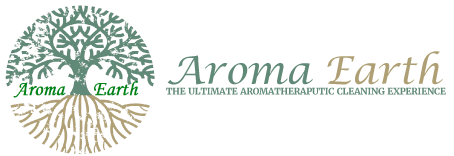We can always recount the ways on how human beings contribute air pollution in environment. Due to the presence of factories, negligent manufacturers, and man-made activities that involve the use of chemicals, cities and progressive countries barely find a perfect spot where they can inhale fresh and clean air daily. But, have you ever thought of the possibility of experiencing air pollution right in the place that you call home? Yes, air pollution or indoor pollution also happens at home and they occur in the most surprising ways. In fact, the Environmental Protection Agency stated that indoor pollution may 2-3 times higher than outdoor pollution. Here are some of the instances when indoor air pollution is apparent.
Firstly, polychlorinated biphenyl or PCB causes air pollution in so many ways, and it is found in almost any household products. The chemical is used as coolant fluids and is mainly present in capacitors, electric motor, and transformers, which apparently play an important role in building a house. The US Environmental Protection Agency released a warning about the dangers that PCB causes, which include cancers in both humans and animals. It also causes woes in the respiratory, endocrine, and reproductive systems. Because of these, its manufacture was banned in the US Congress in 1979 and in 2001 as well by the Stockholm Convention on Persistent Organic Pollutants. At home, the main products that contain PCBs include transformers and capacitors, fluorescent light ballasts, oil used in motors and hydraulic systems, adhesives and tapes, paints, floor finish, and plastics. While this chemical was banned during the years mentioned above, it is still likely that products containing PCBs are still around us because they’re already introduced and had already penetrated the market prior to the ban. At home, PCBs are released into the air when there are poorly maintained transformers, dumping and burning of plastics, and improper disposal of PCB-positive products.
Secondly, your carpet could be a culprit of your kids’ never ending cough and lung problems. It could also be the cause of your ongoing skin irritations and rashes. Basically, carpets seem harmless, albeit they beautify our homes. They also minimize possible accidents like trips and slips at home. However harmless they may seem, carpets are great captors of pollen grains, dust, dirt, mites, pet dander, fungus, and tons of microscopic items that cause lung and skin irritations, which could range from mild to severe reactions. Ever noticed of persistent and recurring cough at home? Has your child been suffering from cough and colds lately? Have you had feelings of itchiness all over your body for the past few days? These experiences may not be caused by your food, but may be caused by your dirty carpets. In addition to that, some manufacturers use formaldehyde when producing carpets. Formaldehyde is a chemical that cause adverse health effects, like cancer, when exposed to it for a long time. Its presence make carpets even a bigger reason to air pollution at home as it tends to turn into gas and blends with air when it starts to wear off.
Thirdly, those air fresheners and other bottled cleaning products at home could cause more harm than superficial cleaning. Although companies promise you spic and span kitchen or sparkly clean living room, don’t expect them to tell you that the ingredients of their products are pretty toxic. Most of these products are chlorine and acid based, which are never friendly to our skin and to our lungs. They are hazardous enough to cause you and your family lung cancers and skin irritations. They may clean your home, but they would never leave a clean residue to your health. Parents should know the health consequences of these house cleaners, particularly if there are children in the house as they tend to put their fingers in their mouth anytime. On the one hand, there are tons of safe, cheap, and easy-to-whip recipes for home cleaning, which you can find below before this article ends.
Fourthly, cabinets and furniture that are wood pressed are most likely to cause indoor air pollution, too. The glue used to press these materials together is commonly manufactured with formaldehyde, another popular toxic compound that causes air pollution. Just like its presence in carpets, formaldehyde tends to gas off when it starts to wear out in time. Therefore, it is best to spend on wooden furniture that isn’t pressed or if they’re pressed, at least they’re done with the use of plant-based glue.
Fifth, poorly maintained furnaces may also introduce suspecting indoor air pollution as they may emit carbon monoxide, gas that is technically found in the exhausts of cars. Conversely, cars with too much exhaust are being regulated by government agencies as these cause severe outdoor air pollution. But, if you don’t maintain your gas stoves and furnaces at home, you could be inhaling polluted air caused by carbon monoxide as well.
How to Prevent Indoor Air Pollution
Fortunately, it doesn’t mean that you cannot eliminate indoor air pollution. Check out this list on how to avoid air pollution at home:
- Toss commercial cleaning products now and switch to homemade recipes for house cleaning. The process is fairly easy and the ingredients are surprisingly cheap and accessible. First and foremost, you will need baking soda, vinegar, borax, oils like tea tree oil, eucalyptus oil, lemongrass oil or lavender oil, fresh herbs and citrus peels, and hydrogen peroxide. These main products are very budget-friendly, don’t you think?
- To clean your toilet bowl, combine a cup of vinegar and ¼ of baking soda. Let the combination stay in the bowl for at least 15 minutes, scrub, and then flush. To sanitize bathroom floors, prepare 2 gallons of hot water in a bucket and mix a half cup of borax into the bucket. Use the mixture to mop the floor sans rinsing it. To remove soap scum, you can sprinkle it with either baking soda or kosher salt before scrubbing. To remove mold or mildew, which is one of the most common and the toughest bathroom dirt to deal with, create a mixture of half cup vinegar and half cup borax into a paste-like solution. Use it to scrub the area then rinse. You can let it sit on the spots for an hour prior to scrubbing. For a fresh-smelling or scented bathroom all day long, leave few drops of essential oils in the walls, but not on the floor. The oils have natural antibacterial properties that trap odor sans the chemicals.
- To clean greasy surfaces in the kitchen, prepare vinegar, baking soda, and vegetable oil. You will also need sponge and a scrubber that is not too coarse as well as an empty spray bottle. Spraying undiluted vinegar on the greasy spots do the trick easily while wiping baking soda with the use of a damp cloth or sponge does the work in cleaning kitchen appliances.
- To clean green your carpets, make a mixture of half a cup of salt, half a cup of borax, and half a cup of vinegar to stained spots in the carpet. Let it dry completely. Once it’s dried, vacuum the area well. To clean unstained carpets, use hot water instead of carpet shampoos. It’s more accessible and way cheaper than a bottle of carpet shampoos anyway.
- Beautify your house by putting plants that help remove air pollution like bamboo and Dwarf Date palms; English Ivy, Peace lily, Spider plants, Daisies including Gerbera Daisies, and Dracenas.
- Open doors and windows and let fresh air get into your house. This is probably the quickest, cheapest, and the easiest way to let out odors instantly sans the harm.







